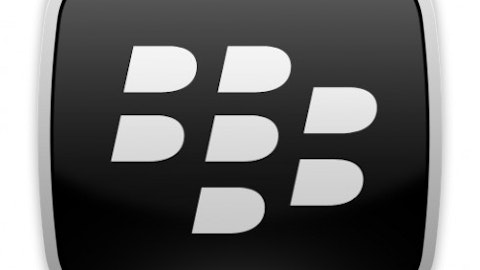Yesterday we looked at the first part of my attempt to parallel the similarities between one of America’s most-watched sports, auto racing (i.e., NASCAR), and investing. If you haven’t already examined my first five points, I encourage you to go back and read those now before driving forward.
My contention is simple: NASCAR may be a popular, and somewhat repetitive, sport, with drivers chasing each other around a track. However, it has many similarities to investing that we can use to help us become better investors. With that being said, here are the final five ways NASCAR can teach us how to invest better.
6. Races are often won and lost by the decisions of a crew chief
I can’t tell you how many NASCAR races I watched in my teenage years that were won and lost because of a gamble of fuel consumption. Sometimes the crew chief was the savior, and occasionally he was the goat. The point is that having a good crew chief that a driver can trust is paramount to a team’s success.
In investing, you also have to have complete faith in the CEO of the companies you invest in. The CEO is essentially the crew chief of the company, being ultimately responsible for its innovations, successes, and failures. Having a great leader can sometimes make all the difference.
Take Apple Inc. (NASDAQ:AAPL), for example. Its co-founder, Steve Jobs, was the instrumental CEO and figurehead that transformed the company from just a PC-maker into a digital revolutionary over a decade’s time.

Source: Matthew Yohe.
Apple Inc. (NASDAQ:AAPL) has sold 350 million iPods and 400 million iOS devices (iPhones and iPads) since they were introduced, and it has essentially changed the way we work and play.
On the flipside we have the recently ousted CEO of J.C. Penney Company, Inc. (NYSE:JCP), Ron Johnson. Johnson’s plan to completely phase out discounting at the retailer while introducing a mini-shop format within its stores alienated its thriftiest consumers and sent same-store sales plummeting nearly 32% in the fourth quarter. I cannot state enough how important a good CEO is to a company’s growth and well-being.
7. You’ll see a lot of pit stops
Unless carmakers can figure out a way to dramatically improve the fuel efficiency of NASCAR vehicles, or tire makers can produce a nearly indestructible set of tires, pit stops during a race are inevitable. Similarly, when investing, you’re going to have to make pit stops for various reasons.
The first pit stop you might make is simply to regroup. As an investor, you aren’t going to make money every single time you buy or bet against a stock. The top traders in the world generally only have a success rate around 60%, so the chances that you’ll never lose a cent are pretty low. The key to this pit stop is to stick to your investing thesis and understand that your long-term gains will more than likely trump your short-term losses by a substantial margin.
Another reason you might head for a pit stop in the investing world is simply to take a break. I may write about stocks, the economy, and investing year in and year out, but even I take vacations and unwind. Investing is important, but so are your family and friends, so make sure you incorporate some “me time” into your life.
8. Drafting helps drivers move up through the pack more quickly
Just like the old phrase that “two heads are better than one,” two or more cars that are running nose-to-tail and reducing the drag that air and wind can cause on both vehicles are likely to work their way up through the field faster than a single car running without a teammate. Likewise, in investing, it’s always nice if a company has multiple partners to help it get to the front of the pack.
The biotechnology sector is a perfect example. There are only a handful of big pharmaceutical companies in existence and even fewer large biotech firms. If small biotechnology companies chose to go it alone without forming intellectual property and financial pacts with big pharma companies, we would probably see far fewer drugs approved today.
ISIS Pharmaceuticals (NASDAQ:ISIS) , for instance, currently has only one drug with FDA approval, but it also has 31 ongoing clinical trials and numerous collaborative partnerships with Sanofi SA (ADR) (NYSE:SNY), GlaxoSmithKline plc (ADR) (NYSE:GSK), Biogen Idec Inc. (NASDAQ:BIIB), and Pfizer Inc. (NYSE:PFE), just to name a few. These partnerships help fuel ISIS’ opportunities, provides these four big pharmaceuticals with the opportunity to add new compounds to their aging pipelines, and gives ISIS Pharmaceuticals (NASDAQ:ISIS) a much better chance at succeeding than if it had no partnerships whatsoever.
9. You will see advertising everywhere
No NASCAR race is complete unless it appears that every square inch of a drivers’ car, uniform, trailer, and racing circuit is covered by advertisements. It’s simply impossible to go to a NASCAR event without being surrounded by ad impressions. Similarly, in investing, brand image is very important.
Take McDonald’s Corporation (NYSE:MCD) which spends what’s estimated to be $12 million to $15 million annually to sponsor car No. 1, driven by NASCAR’s Jamie McMurray. McDonald’s Corporation (NYSE:MCD), according to research firm Interbrand, is the seventh most-valuable global brand, worth an estimated $40 billion. It continues to bring in new customers with innovative food options and competitive value menu pricing, but it also relies on brand value impressions at major sporting events like NASCAR races to drive traffic to its restaurants. The lesson here is that well-known and readily visible companies often make for solid long-term investments.
10. You’ll witness a post-race interview geared toward the fans
Like any sport, you’ll see one of two drivers who may occasionally let their tempers get the better of them. But, the post-race interview process is generally geared toward entertaining the fans and providing the storyline that will keep them entertained and coming back for next week’s race. This post-race interview is a reminder that the CEOs of the companies you invest in have a fiduciary responsibility to always act in the best interests of shareholders.
Just as we discussed earlier, having a great CEO greatly magnifies a company’s chance at being successful. Another aspect we can add to that formula is having a transparent CEO who isn’t afraid to tell it like it is. In 2012, GMI Ratings released its annual list of America’s most trustworthy companies, with insurer The Progressive Corporation (NYSE:PGR) finding its way onto the list of top large-cap scorers. The point of GMI’s score is to find companies that don’t use inconsistent accounting methods to boost their profits but offer a very transparent method of analyzing their performance. The Progressive Corporation (NYSE:PGR)’s current AGR score of 91 puts it among the top eight large-cap companies in America with regard to trustworthiness according to GMI’s research.
The pace car is getting ready to pull off the track
Whether you’re a seasoned investor or just getting ready to get into the race car for the first time, always remember that it’s a long race. There will be a few caution flags, dings, and dents along the way, but sticking to your investment plan and picking out companies with great leaders and strong brand values are usually a good plan to get your portfolio into victory lane.
The article 10 Ways NASCAR Can Teach Us How to Invest Better: Part 2 originally appeared on Fool.com is written by Sean Williams.
Fool contributor Sean Williams has no material interest in any companies mentioned in this article. You can follow him on CAPS under the screen name TMFUltraLong, track every pick he makes under the screen name TrackUltraLong, and check him out on Twitter, where he goes by the handle @TMFUltraLong.The Motley Fool recommends Apple, GlaxoSmithKline, and McDonald’s and owns shares of Apple and McDonald’s.
Copyright © 1995 – 2013 The Motley Fool, LLC. All rights reserved. The Motley Fool has a disclosure policy.


